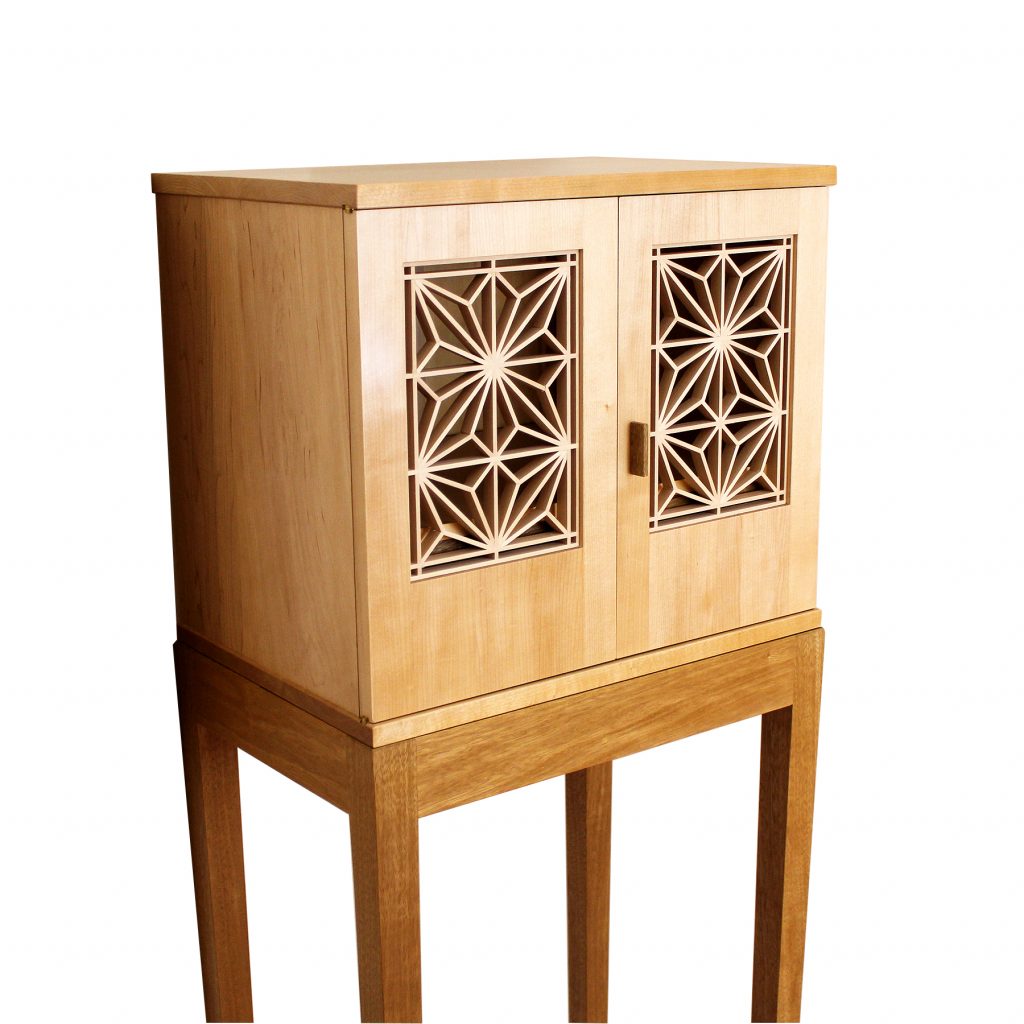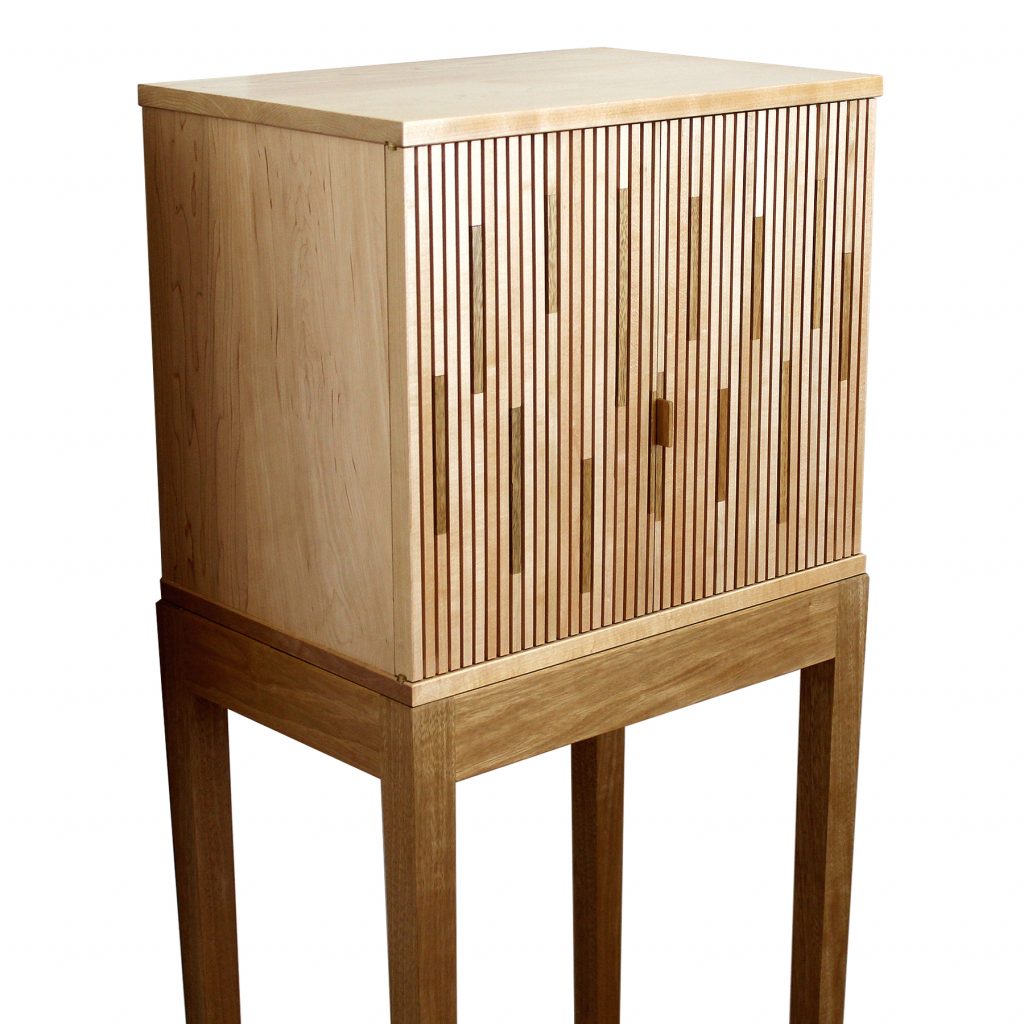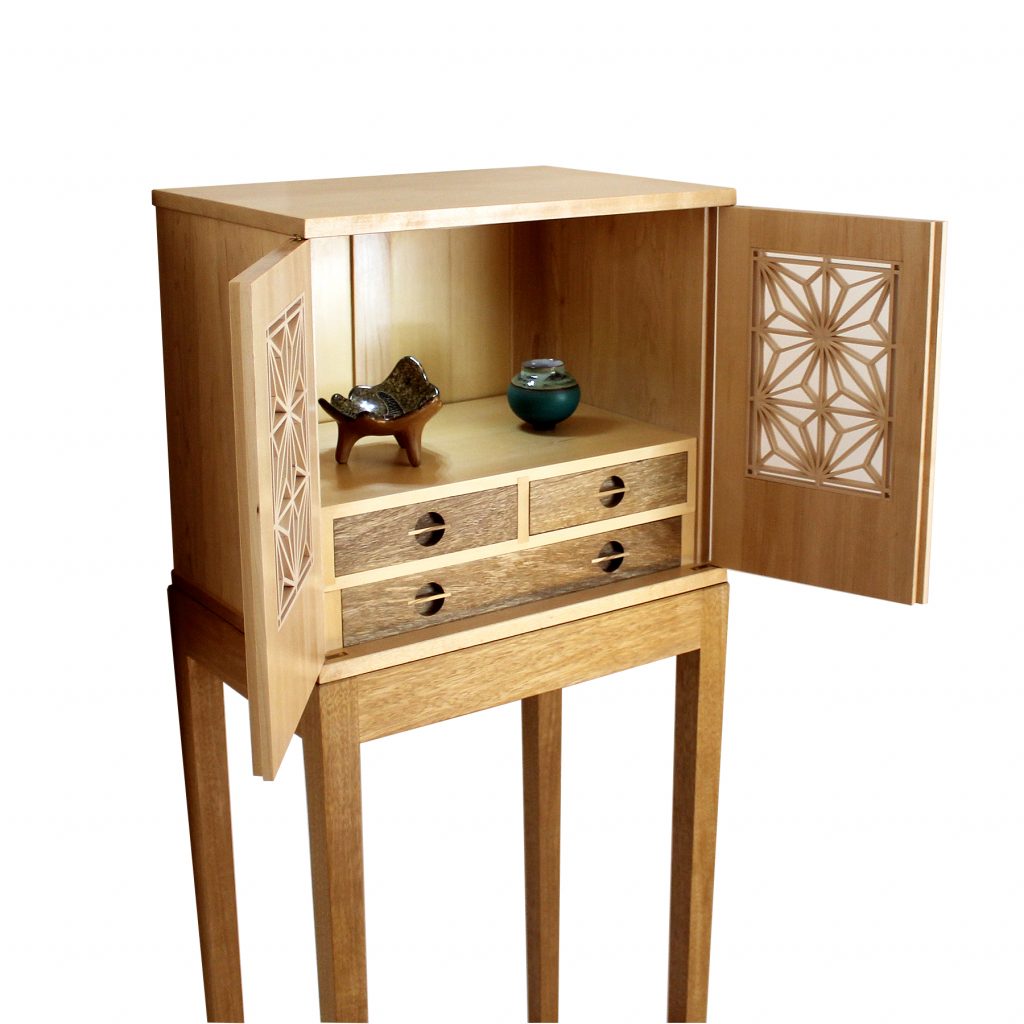During this pandemic, I invested time in developing a versatile design for a standalone display cabinet. The cabinet on stand has essentially the same dimensions in each of the following iterations. What is different however, is the focal point of the cabinets, referring to the doors. When I lay eyes on a cabinet on stand, I am drawn to the aesthetic of the cabinet and cabinet doors. Proportions of the cabinet and overall design are next, and selection of woods is last. So why not develop a series of cabinets with pleasing proportions and afterwards create a different set of doors for each version? Although the “pleasing proportions” component is subjective, I did ask a few people for their opinion of the design and proportions and it was overwhelmingly positive. The choice of woods for the cabinet case and stand was already selected and domestic hardwoods used, Maple and Alaska Cedar. The wood for the stand was selected to be complementary to maple. The stand is not a dark wood, but a slightly darker, richer color than maple with subtle streaks of black. (Black Limba). So with the design, proportions, and woods selected, I was free to invoke my creativity in designing the doors.

The first photo is a standalone cabinet version with book-matched Spalted Maple doors. The doors are veneered using maple as the inside veneer. The lighter maple is consistent with the case interior and brightens the interior as well. Spalted Maple veneers were hand-picked and meticulously prepared before applying to the substrate. Spalted maple is relatively brittle so this took time and care.

The second photo is a standalone cabinet version with inset Kumiko panels in maple doors. The Kumiko panels feature the popular asa-no-ha pattern or motif. I already had success using Kumiko panels in standalone cabinets, so why not create a Kumiko version. The Kumiko panel was custom designed to work with the dimensions of the door panels. The light basswood elements forming the Kumiko panels contrast well with the surrounding maple.

The third version is a twist on tambours. Tambours slide along tracks and are typically used in cabinets, credenzas or sideboards. The tambour concept was modified to instead be fixed in this new set of doors. Since this was a one-off design, tambour strips were individually created and glued to a hardwood substrate. I did develop an alignment jig to ensure the tambour spacing was uniform across the two doors. The design was a challenge and the effort was successful. Feedback so far is very positive!

Included above is a photo of the cabinet interiors. The interior is consistent for each version of the cabinet. Stacked, dovetailed drawers define the lower part of the interior and serve as a platform of art objects or decorative and valuable sculptural pieces. The drawers are individually fitted and have recessed pulls to maximize their depth and provide an unique and interesting aesthetic. The back panel is composed of a maple frame with panels of lighter Alaska Cedar.
Create your own Kumiko panels! Online Kumiko Course now available.
https://woodskills.com/collections/courses

